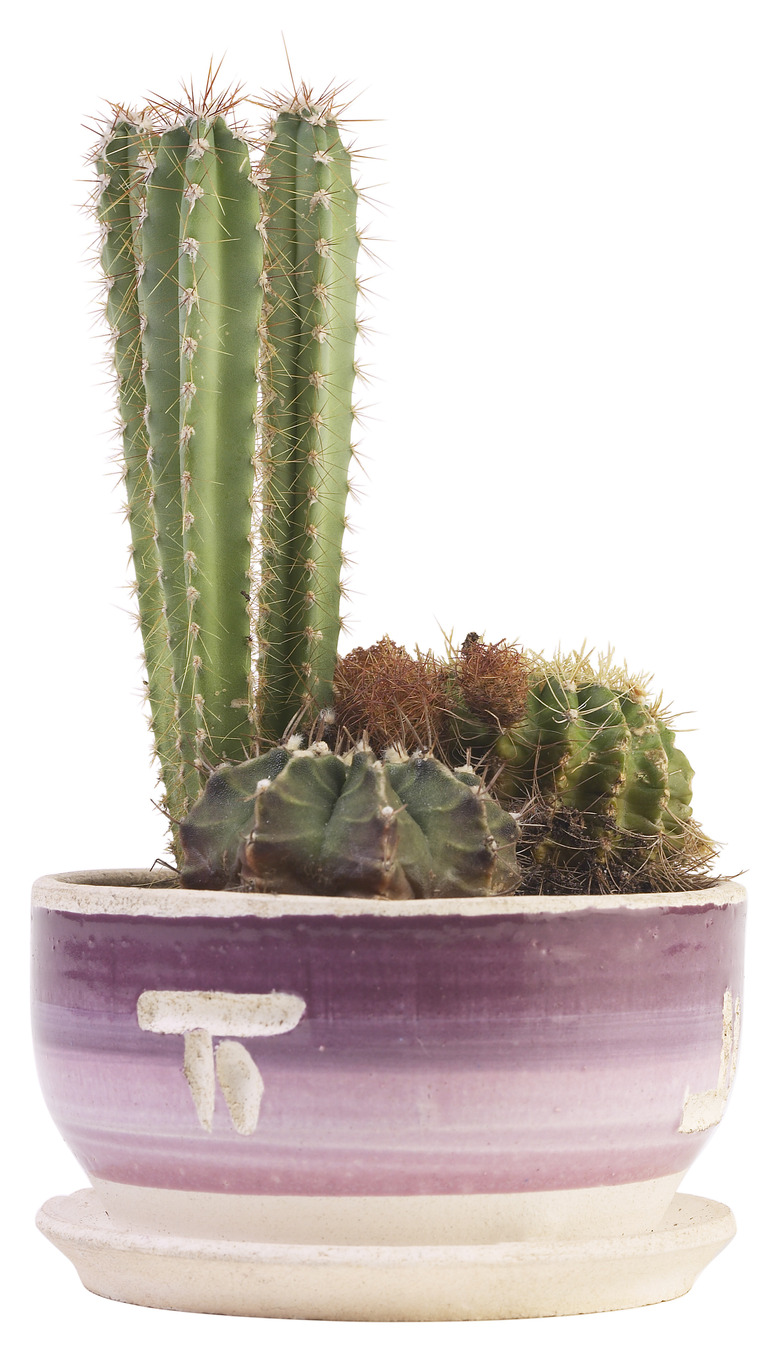The Functions Of A Cactus
Cactus plants are much more than just spine-covered desert plants. In reality, the cactus family incorporates a great variety of versatile and useful plants that are both attractive and easy to grow. In dry regions and drought-resistant gardens, cactus is ideal because it can store water on its own. Many cactus varieties display beautiful, exotic-looking flowers. With their many shapes and sizes, cacti serve well as ornamental and landscape plants without requiring much maintenance.
Drought Resistance
Cactus is one of the best choices for a drought-resistant garden in arid regions and can help gardeners and landscapers reduce water usage. Drought-resistant gardens are those designed to thrive even when rainfall is infrequent, and do not require irrigation. Cacti are succulents and can store water within their stems for use during periods of drought. The ease of growing cactus makes maintaining a landscape more feasible. Overwatering is one of the most common ways to kill a cactus. Water infrequently, especially during winter.
- Cactus plants are much more than just spine-covered desert plants.
- In dry regions and drought-resistant gardens, cactus is ideal because it can store water on its own.
Ornamental Flowers
Despite their often intimidating and painful spines, cactus plants often produce some of the showiest flowers among plants. Plant flower-bearing cacti as ornamental additions both indoors or outdoors. The flowers tend to be limited in number but are often large, have numerous petals and come in various shapes. This is especially true of Epiphyllum, the orchid cactus, which grows flowers up to 8 inches in diameter that emit a strong fragrance. Soehrensia bruchii bears vivid red petals, while Trichocereus lamprochlorus explodes a large bloom in bright yellow.
Landscaping
Plant cacti in a landscape function to add texture and shape to a yard, or to fill open spots with versatility and variety. Grow lithops if you need low-growing, small specimens. Lithops are called "living stones" or "flowering stones" because they mimic rocks. Other cacti serve well as potted plants, such as crassulas. Grow a taller cactus, such as Saguarop, to fill vertical space in a landscape. Depending on the variety, cacti may be round and small, or grow extremely large, and may be shade-loving or sun-loving plants.
- Despite their often intimidating and painful spines, cactus plants often produce some of the showiest flowers among plants.
- Depending on the variety, cacti may be round and small, or grow extremely large, and may be shade-loving or sun-loving plants.
Food
Certain varieties of cactus can also function as edible food crops. The Mexican dish "nopales" is made of young stems of the prickly pear cactus.The texture and flavor is comparable to green beans. The prickly pear's small leaves are also used as a crispy lettuce. Texas A&M Agrilife Extension recommends preparing nopales as follows: Remove thorns with a peeler or knife if they are present. Cut them into squares and boil with chopped onion, salt and soda until tender.
